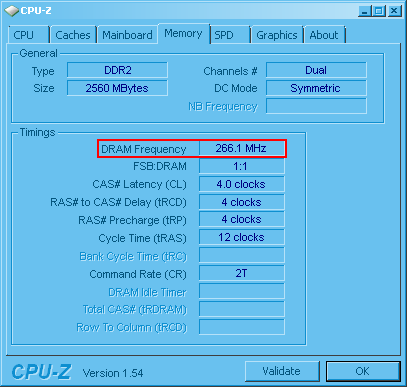6
I'm looking to upgrade memory in an older motherboard.
The processor is an AMD Sempron 2500+ with a maximum speed of 333/166MHz.
The motherboard is an MSI MS-7061 (KV3M-V), which accepts up to 2Gb of DDR memory maximum PC2700 in 2 slots and has a maximum FSB of 333MHz.
The board does not have dual-channel support.
Existing memory includes a stick of 512Mb PC3200, which seems to be running OK (presumably at PC2700) but is rated 200MHz, which is below the FSB speed. The other stick is 256Mb PC2100/133MHz, again below the FSB speed. (All figures from CPU-Z.)
I have a chance to acquire a single used stick of PC3200/400MHz memory very cheaply. Crucial's system scanner seems to suggest that this will be OK with my system, but other sites have suggested that running memory with a higher frequency than the FSB can cause instability. Is this true? Would I be better waiting until I can buy the correct PC2700/333MHz stick?
I'm assuming that the mixed memory I have at present is running as 768Mb at 133MHz. Is this a reasonable assumption? If so, would you expect the performance differences between 768Mb/133MHz and 1Gb/333MHz to be very noticeable?
If I install the new 1Gb/400 or 333MHz stick in slot 1, am I right in thinking that adding back the existing 512Mb/200MHz stick in slot 2 would pull the whole 1.5Gb system memory speed down to 200MHz? If so, which would be better - 1.5Gb/200MHz, or the single 1Gb stick at the full 333MHz that the FSB permits? Is more headroom more important than extra speed?
Any help - or even opinions - gratefully received. I can't find reliable information, and I can't afford to make expensive mistakes.
Update: Are there any issues in running 400MHz DDR modules in a 333MHz FSB board? Crucial says no, others say maybe.
Thanks for looking.
